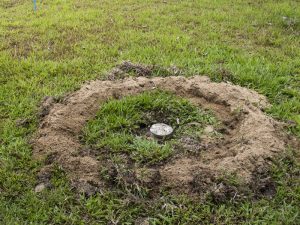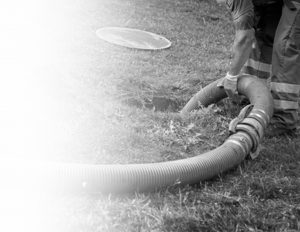Though cesspools and septic tanks are vital, most people don’t give them the attention they deserve. Unfortunately, not properly caring for your cesspool or septic tank could end up causing serious trouble; namely, a backup.
The last thing anyone wants to deal with is a sewage overflow. Not only is it a major inconvenience, but it could also pose a serious health risk.
To avoid a backup, there are certain do’s and don’ts that you should adhere to.

Cesspool and Septic Tank Do’s
If you don’t want to contend with sewage overflow, here’s a look at some cesspool and septic tank do’s that you should abide by:
Do schedule regular pumping
While some of the wastewater held in a septic tank or cesspool does seep into the ground through the drain field, it’s impossible for all of that water to empty out. Plus, waste accumulates in the tank, and over time, that buildup needs to be removed. Generally, pumping should be done every three to five years, or once the total depth of the accumulated waste is more than one-third of the liquid depth of the tank. If the tank isn’t pumped and cleaned, the tank will eventually overflow. An overflow can cause a number of problems, including flooding, damage to the structure of your home or business, and exposure to sewage. The drain field could also be damaged, which is quite costly to repair.
Use Cleansers Wisely
Detergents and cleansers are a must for most people. Using these items in normal amounts won’t impact your cesspool or septic tank. However, using them in excess could be harmful to the system. Be mindful of the amount of soap, household cleaning products and laundry detergents you put down your drains and toilets. Also, make sure you avoid using anything that contains harsh chemicals, as well as bleach. Lastly, opt for liquid detergents over powdered, as the latter can cause clogs.
Do Laundry Sporadically
While it dedicating an entire day to laundry might be more convenient for you, it’s a major inconvenience for a cesspool or septic tank. The average washing machine uses nearly 50 gallons of water. Multiply that amount by several loads and your system will be overwrought with wastewater. Doing one load of laundry is easier for a tank to handle, which means there’s less of a risk of a backup.
Do Use Water-Saving Items
Wherever possible, install water saving fixtures, such as showerheads, toilets, dishwashers and washing machines. These fixtures can significantly reduce the amount of water you use, which is not only good for your cesspool or septic tank, but it’s also good for the environment.
Do Remove Dangerous Trees
If you have any trees that are growing near your waste removal system, it’s a good idea to have them removed. Tree roots can grow through pipes and tanks, causing damage or clogs that can cause serious problems. While it might pain you to do so, having any trees that are near your system removed will save you from inconvenient and costly repairs.
Do Note the Location of Important Parts
Septic systems and cesspools contain several important components, including drain fields, covers, and pipes. Make sure you take note of the location of these components so you can let a cesspool company know where they are, and make maintenance and repairs a lot faster and easier.
Do make Sure Rainwater Runoff Doesn’t Flow Into or Near the System
Rainwater runoff can overwhelm a septic system. Make sure that any and all drainage – gutters, and waterspouts, for example – do not drain into or near your system. If it does, one heavy rainstorm or snowmelt could spell major trouble.
Cesspool and Septic Tank Don’ts

While it’s important to make sure that you are doing the above-mentioned things to avoid an overflow, it’s just as important to avoid doing certain things, as they can cause clogs or damage that can lead to a backup.
Don’t Use a Garbage Disposal
Though they might be convenient, garbage disposals and septic systems are a bad combination. They cause a significant increase in solid waste accumulation in a cesspool or septic tank. Moreover, certain items can wreak havoc on the system. If you do decide to use a garbage disposal, it’s a wise idea to have a cesspool installer upgrade the size of your current tank. Additionally, you should schedule pumping more frequently.
Don’t Put Certain Items Down Drains and Toilets
There are a number of things that should never be flushed down drains or toilets. Some examples include:
- Coffee grounds
- Sanitary Products
- Cigarette butts
- Garbage
- Cotton swabs
- Baby or handi-wipes
- Motor oil
- Paint
- Paper towels
- Plastic, latex or metal objects
- Bandages
- Animals (dead fish, for example)
A good rule of thumb to keep in mind is this: if you wouldn’t, couldn’t, or haven’t eaten something – don’t put it in your cesspool or septic tank!
Don’t Use Chlorine or Bleach in Excess

Minimal amounts of chlorine and bleach are safe; however, flushing too much of these chemicals into your system could disrupt the bacteria content, which could impede the tank’s ability to break down waste and eventually cause a backup.
Don’t Use Cesspool or Septic Tank Additives
There are several additives on the market that claim they can clean pipes and aid in the breakdown of waste. In reality, however, these additives can actually cause clogs, and several can pollute groundwater. There’s no replacement for routine maintenance and proper care.
If you live or work in Northport and you have any questions or concerns regarding your cesspool or septic tank, contact Northport Cesspool at (631) 529-2149. Our cesspool company offers a range of services, including cesspool installation, pumping, cleaning, and much more. We are located within easy reach of all points of interested in Northport, including the Northport Yacht Club and Northport Park.